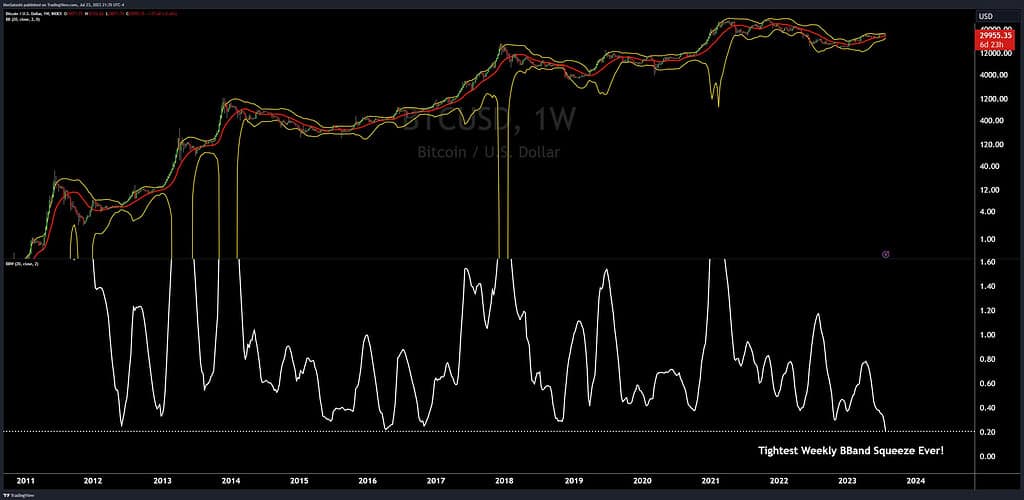The Bitcoin Implied Volatility Index has recently hit its lowest point since the introduction of the tracker on the crypto options exchange in early 2021. Deribit, the exchange responsible for this future-looking Bitcoin (BTC) volatility index, commonly used as a measure of crypto fear, reported that it has reached its lowest level in two years, suggesting a potential absence of significant price fluctuations for Bitcoin in the near future.
As of July 24, the volatility index for both Bitcoin and Ether (ETH) has dropped to a multi-year low of 37%, as noted by the crypto derivatives analytics platform Greeks Live. Moreover, the current implied volatility level is the lowest ever recorded in the history of the cryptocurrency market, according to the DVOL algorithm’s assessment.
DVOL, known as the Deribit Implied Volatility Index, serves as an indicator of the anticipated volatility for a specific cryptocurrency asset over the next 30 days, accomplished through the analysis of option activity. In simple terms, this index provides insights into the potential price swings of the cryptocurrency in the near future.
According to Greeks Live, the prolonged low liquidity in the market has significantly suppressed the levels of implied volatility (IV) for Bitcoin. This implies that derivatives traders lack confidence in major market movements in the short term, and the absence of significant price fluctuations is likely to persist.
Volatility of Bitcoin
The decreasing overall volatility of cryptocurrencies is an undeniable trend that will inevitably drive the implied volatility of cryptocurrencies to continue reaching new lows.
Various analysts, employing different measurements, have expressed similar views. For instance, on July 24, crypto analyst Josh Olszewicz noted that Bitcoin’s weekly Bollinger Bands had narrowed to unprecedented levels. He stated, “This is the tightest bbands [Bollinger Bands] we have ever seen on the weekly timeframe.”
Bollinger Bands are a statistical charting tool that depicts the price and volatility trends of an asset over time. They consist of a middle trend line, flanked by two outer bands positioned at two standard deviations away from the middle line.

Since mid-March, the cryptocurrency markets have been experiencing a period of limited price movement, with the total capitalization remaining relatively stable at approximately $1.2 trillion. Apart from a short-lived peak in mid-April and a similarly brief dip in mid-June, there have been minimal fluctuations from this level.

